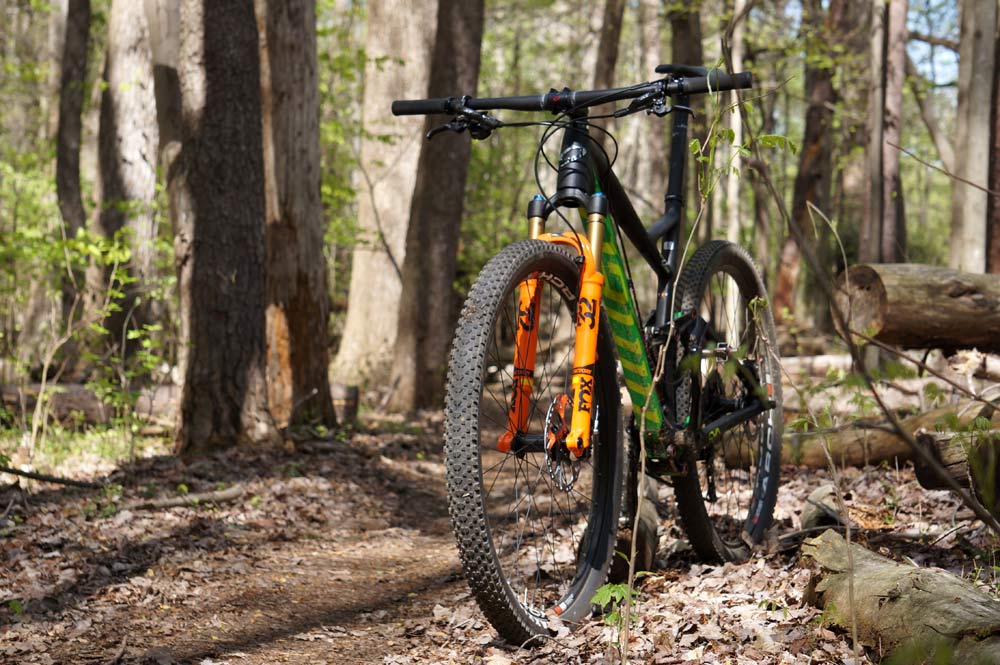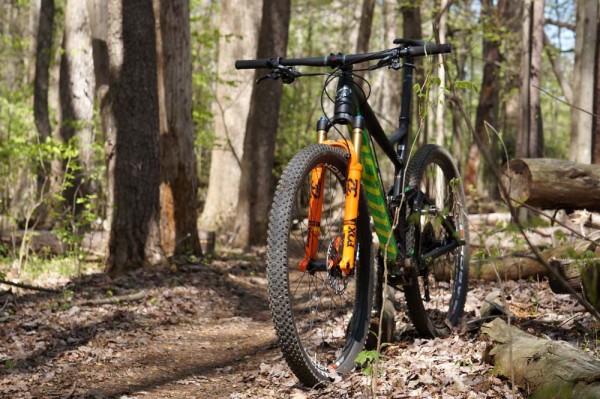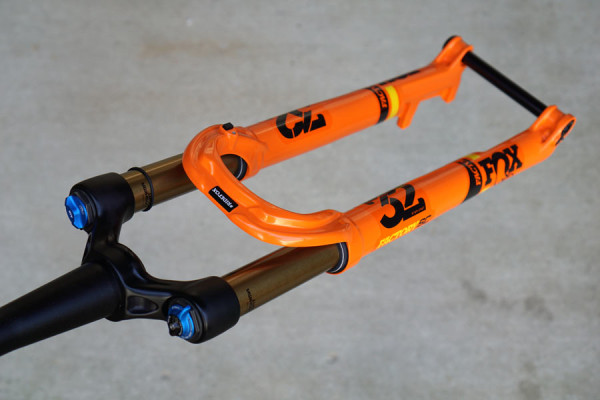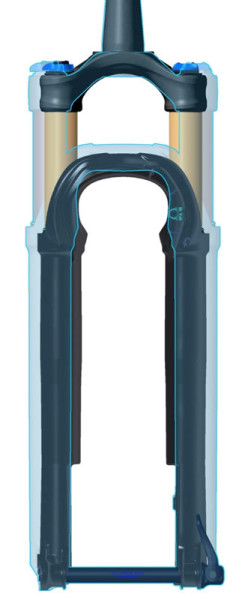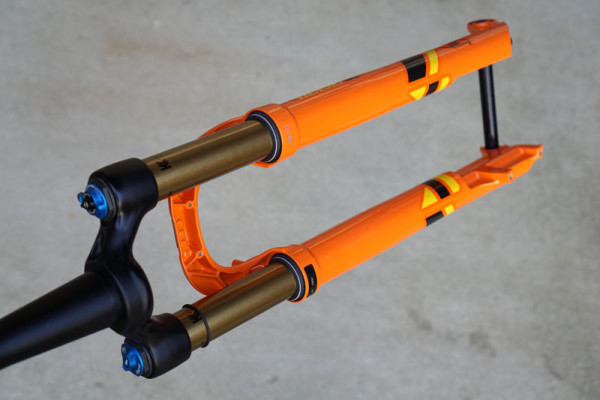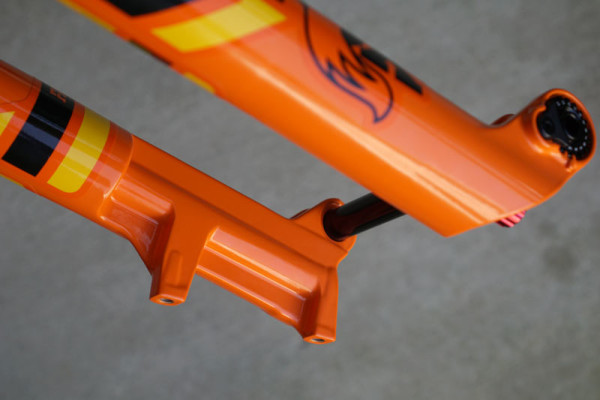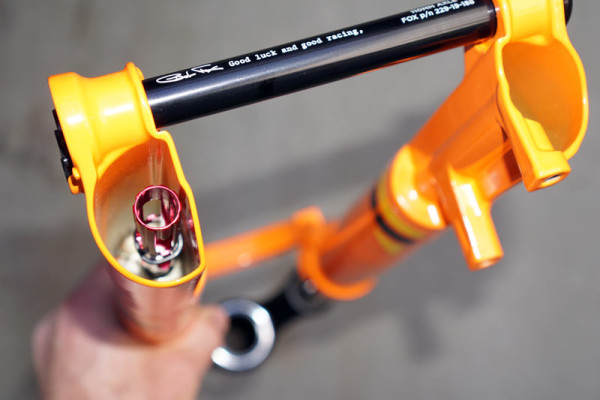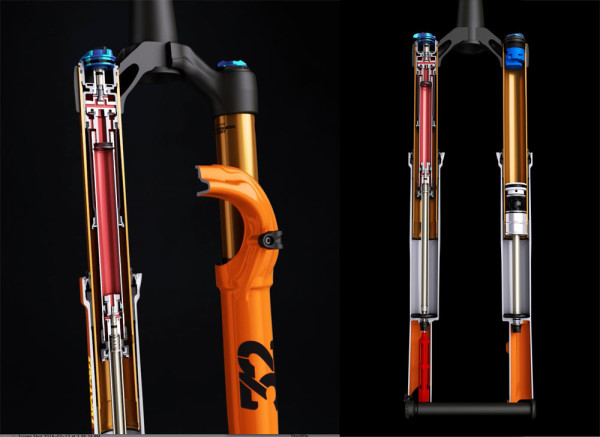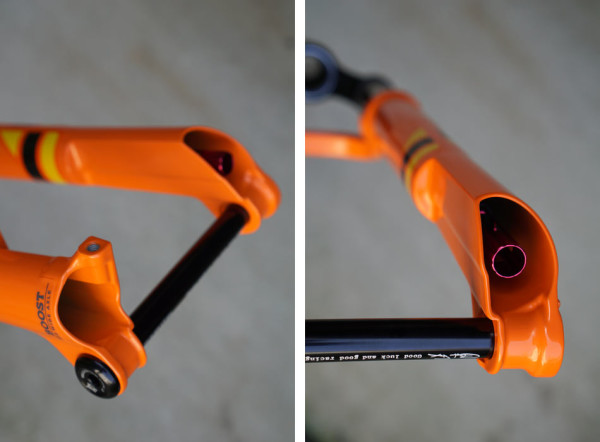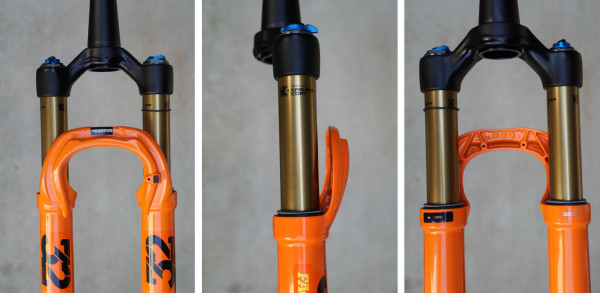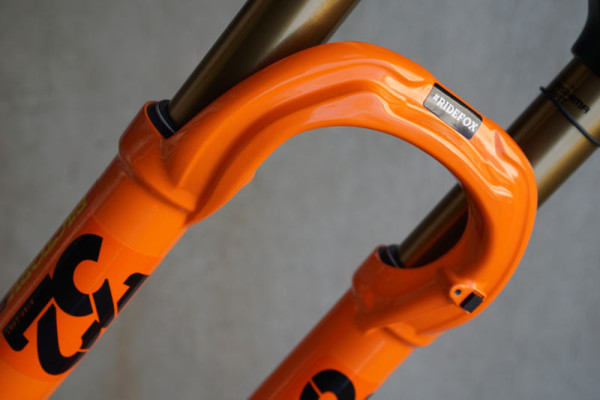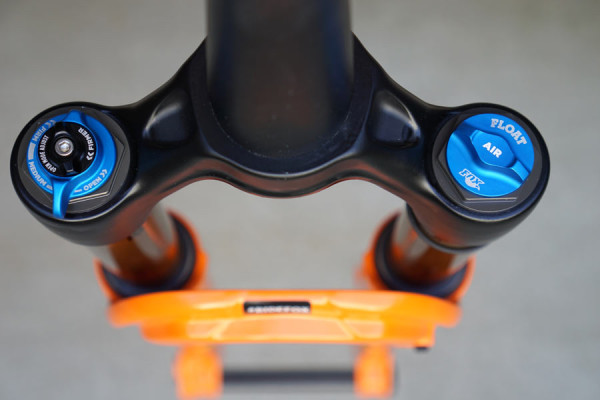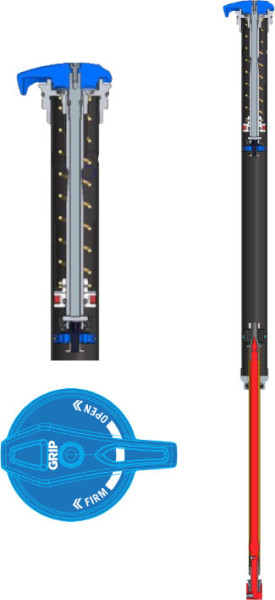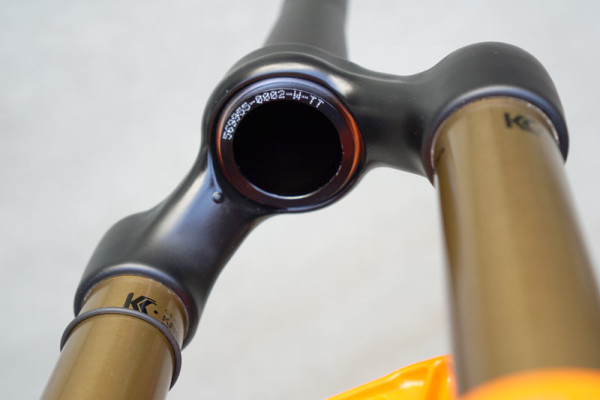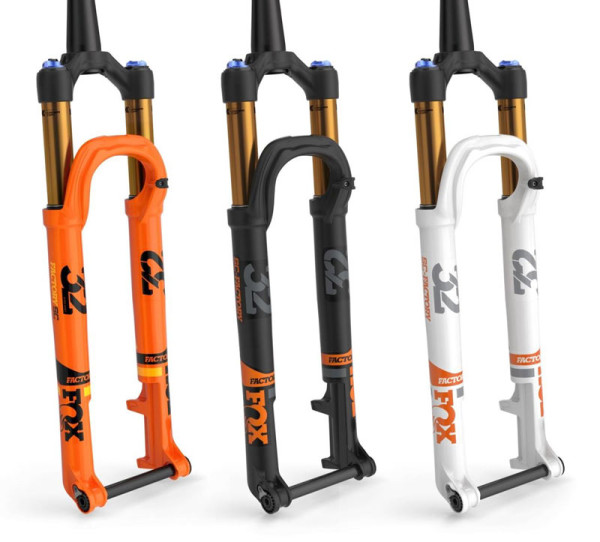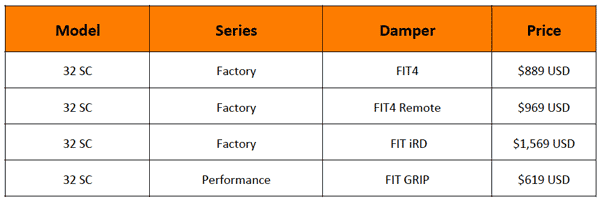While all the attention’s on enduro, there’s still development going on at the shorter travel end of the market, and one of the more interesting new entries is the Fox 32 SC (Step Cast) suspension fork.
Aimed squarely at the XC racer, it takes a very novel approach to shaving weight. Actually, several approaches, using both a narrower crown and stepped lowers. The internals have been reworked to save weight, too, which all comes together in a fork that hits 1,379g (3.04lb) on our scales for a Boost 29er model! It only comes with 100mm travel, and only with a tapered steerer, but you’ll get several cartridge options for controlling compression damping.
Check out all the tech details below…
The fork will be available in 27.5″ and 29er sizes, with Boost 110mm and standard 100mm axle spacing options for both. But, both Boost and standard use the same 120mm crown spacing.
Center to center, the upper tubes on the 32 SC measure 120mm, which is 10mm narrower than the 130mm of a standard, non-Boost Fox 32 fork. But, the max recommended tire size was kept respectable at 2.3″, which falls well within with XC tire usage. The lowers get two different stepped shapes, one to accommodate Boost’s 110mm axle spacing, and one to fit the standard 100mm axle. The stepped design, which is simply the indent that you see at the bottom, creates clearance for the spokes and disc brake rotor, which is why they could make the fork’s crown narrower.
The forks will ship with the tooled Kabolt thru axle, which saves about 40g off their standard thru axle with lever.
Because the stepped design reduces space inside the forks, a few changes to the internals had to be made. The rebound adjust knob is much longer, and the FIT4 cartridge is a bit shorter. But, Fox’s PR manager Mark Jordan told us only the damper’s shaft is shorter, so the performance is the same as their full length FIT4 damper cartridge.
This potentially meant a smaller air chamber, but Jordan says the spring curve for the 32 SC is the same as the standard 32. It comes stock with two volume spacers inside, but will hold up to four. The damping cartridge also gets a few updates to save weight and improve performance. Compared to the 2015 unit, this newer 2016 cartridge uses a larger RC2 10mm shaft diameter to move more oil, and it gets a new machined aluminum piston, intricate material removal and consolidation of parts to make it lighter.
The compression circuit’s valving has been tuned specifically for this fork, giving it a lighter compression damping at mid and high speeds, but preserving the active low speed compression of their standard 32.
Extensive shaping and material removal around the dropouts and throughout the lowers leaves even more weight on the casting room floor.
Their usual threaded insert is on board if you decide to run their levered axle, but it comes with the lighter, sleeker Kabolt.
The crown gets hollowed sections (visible in cutaway further up in the story), and the arch has just enough bracing to do its job. Ridges and shaping on the front make up for the loss of trussing.
The Factory fork’s FIT4 damper has their Firm/Medium/Open compression knob with an additional micro-adjust knob for the Open setting. You’ll be able to get this with or without a mechanical remote, or with their iRD electronic remote lockout. The iRD loses the micro-adjust capability, though.
There’s also a Performance model with black anodized stanchions rather than Kashima coating. It gets a new FIT GRIP damping cartridge. It’s a closed system that uses a spring loaded IFP and overflow valves at the top of the compression circuit. The adjustment knob uses micro clicks running from Firm to Open, letting you set it at various points throughout its range rather than three fixed positions.
The crown is definitely smaller than what we’re used to seeing these days.
The 29er Boost Factory model hit our scales at 1,379g (3.04lb) with uncut steerer and thru axle (brake hose clip and star nut not included). A 2016 Fox Factory 32 (cut steerer, with axle, hose clip and star nut) came in at 1,732g (3.82lb), so you’re saving more than 3/4 of a pound! Claimed weight for the 27.5″ is 1,355g (2.98lb) and 29er is 1,360g (2.99lb), both with 165mm steerer, star nut and Kabolt axle.
Color options are orange, black and white, all will be available in May 2016.
Max rotor size is 180mm for 27.5″ forks and 203mm for 29er. Rake is 44mm on 27.5″, and 29ers get a choice of 44m or 51mm.
Stay tuned for our first ride review!
